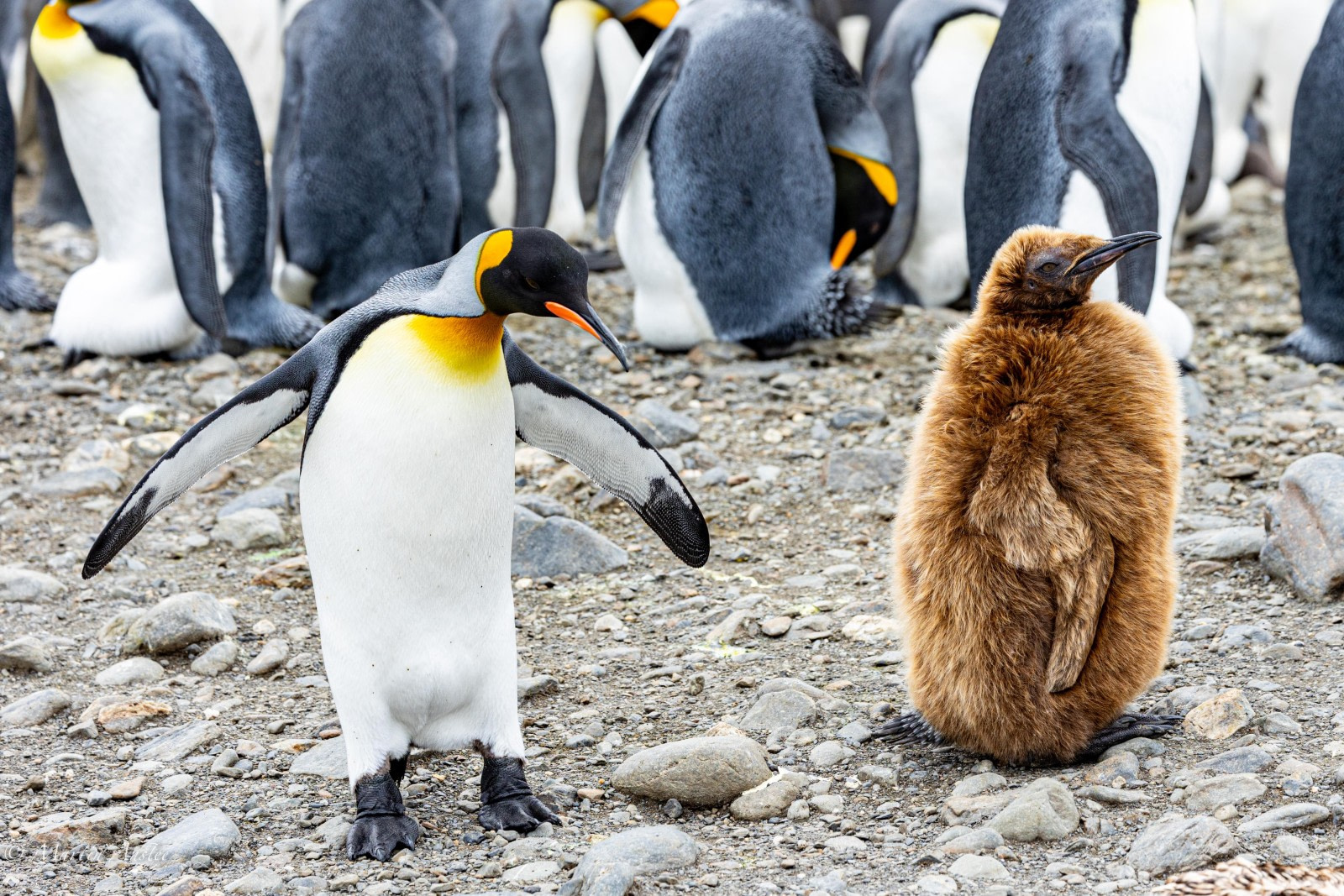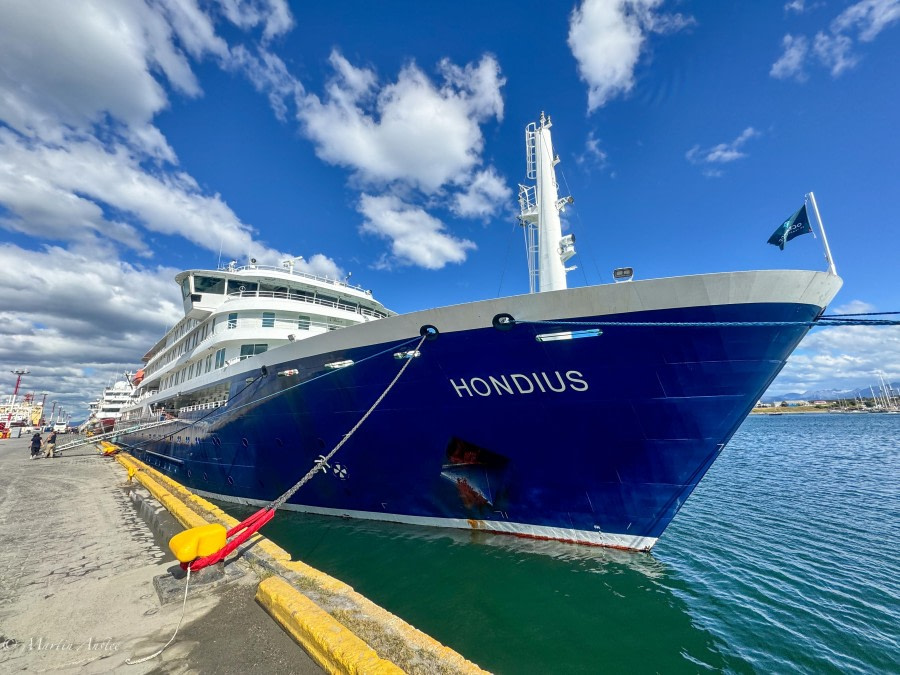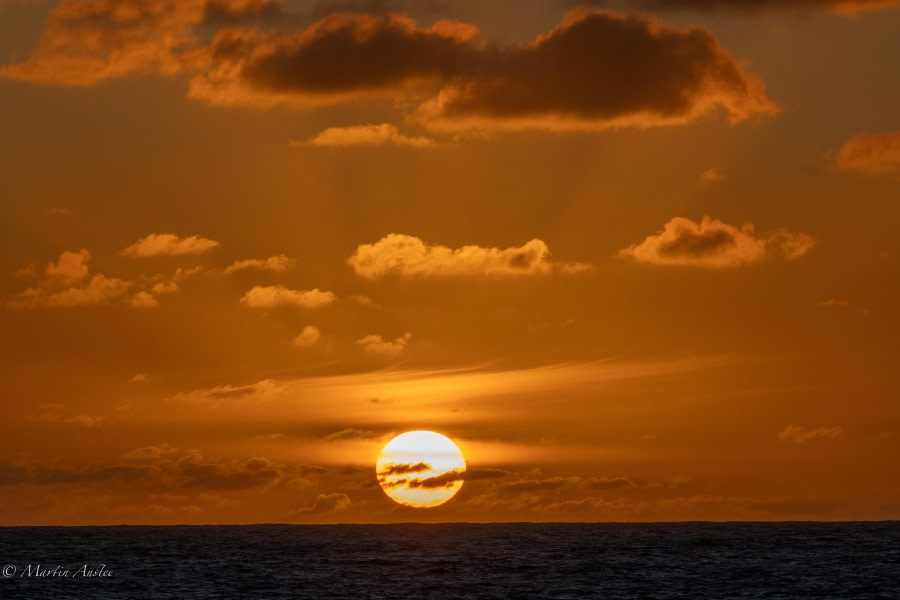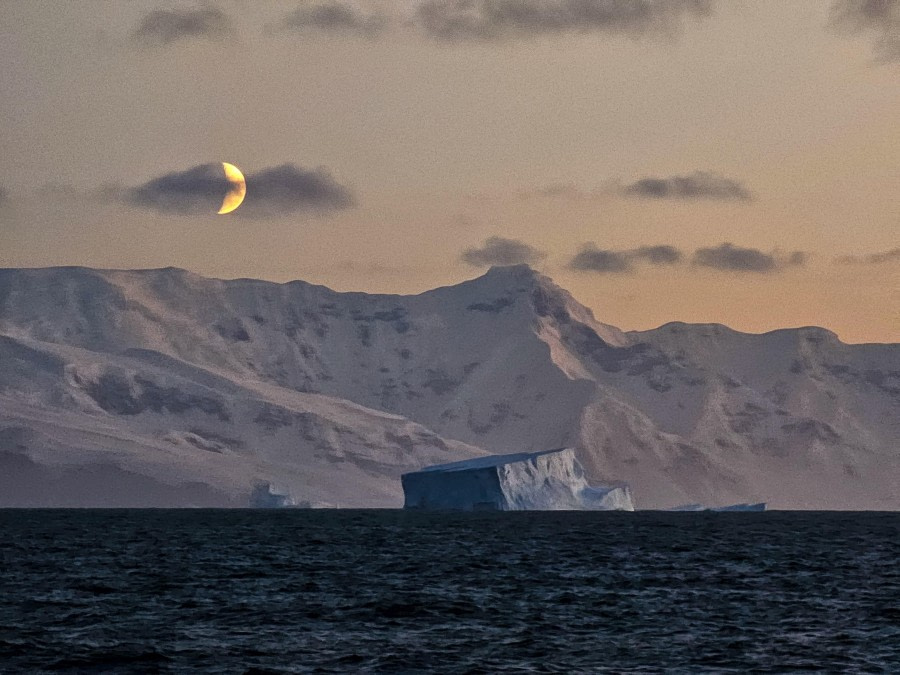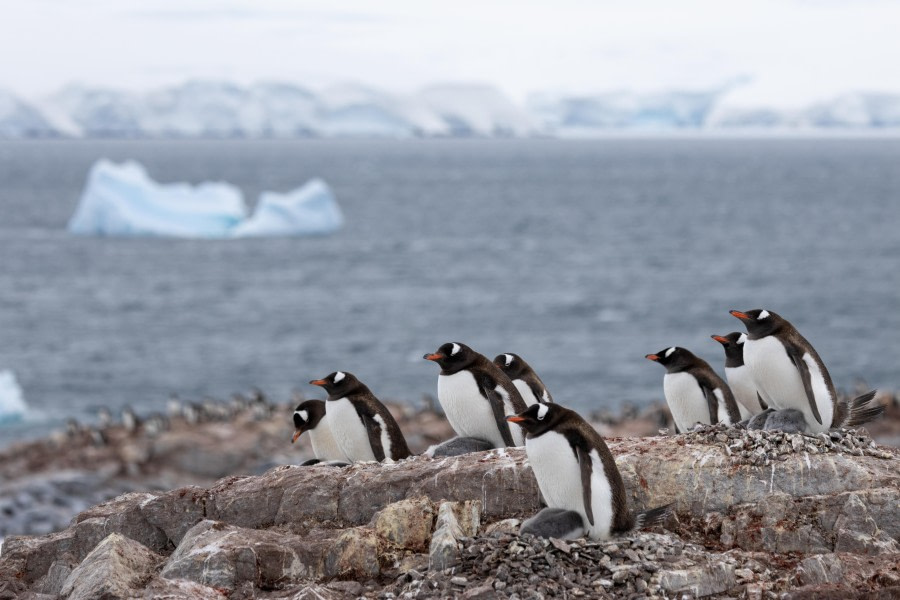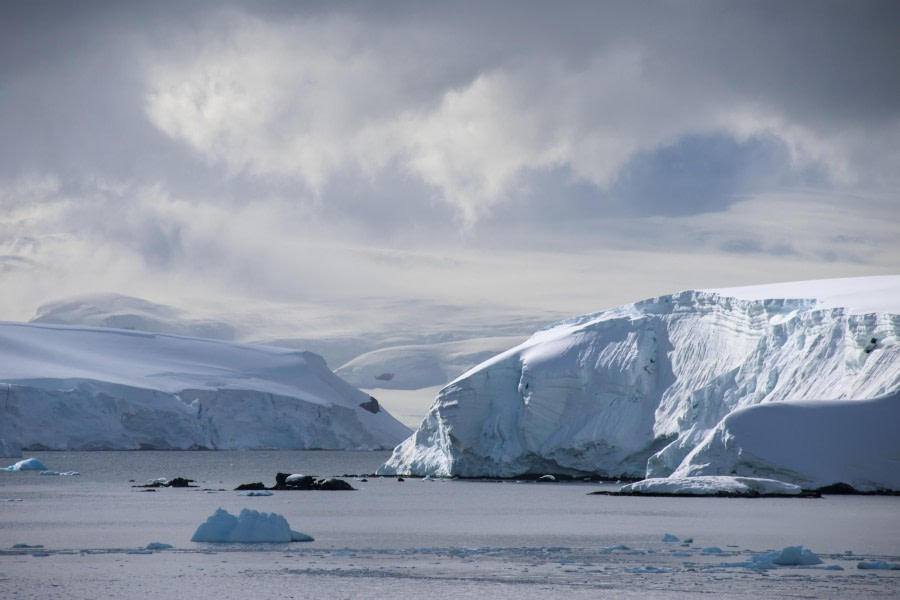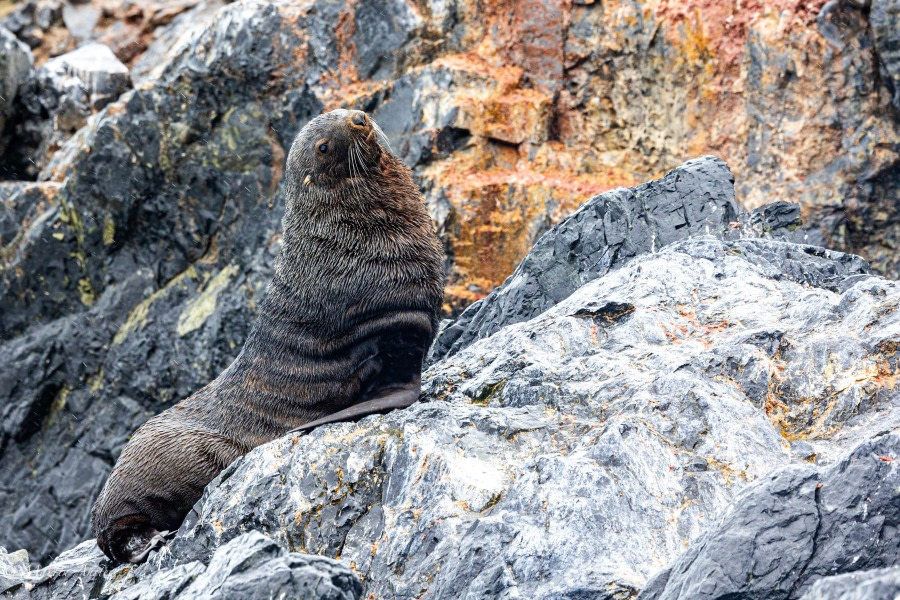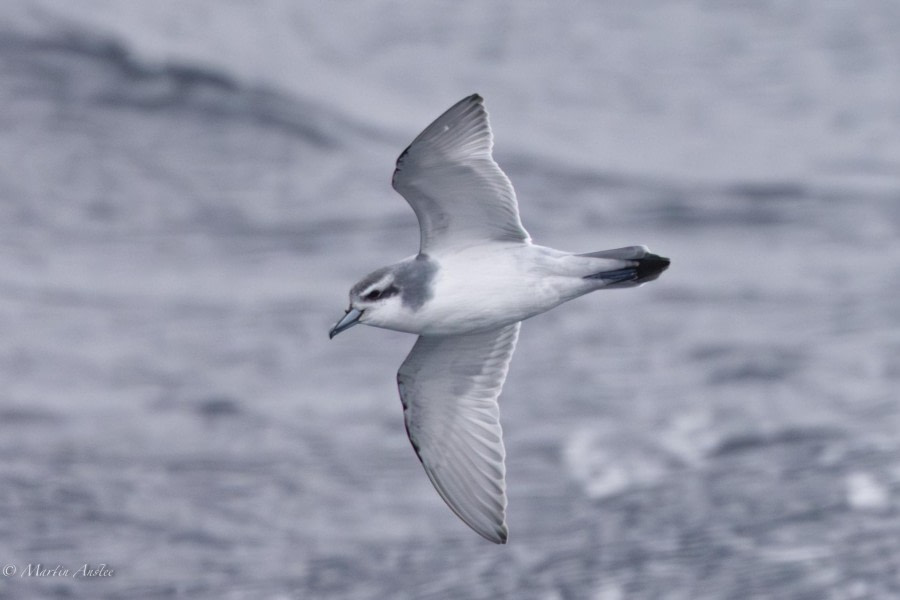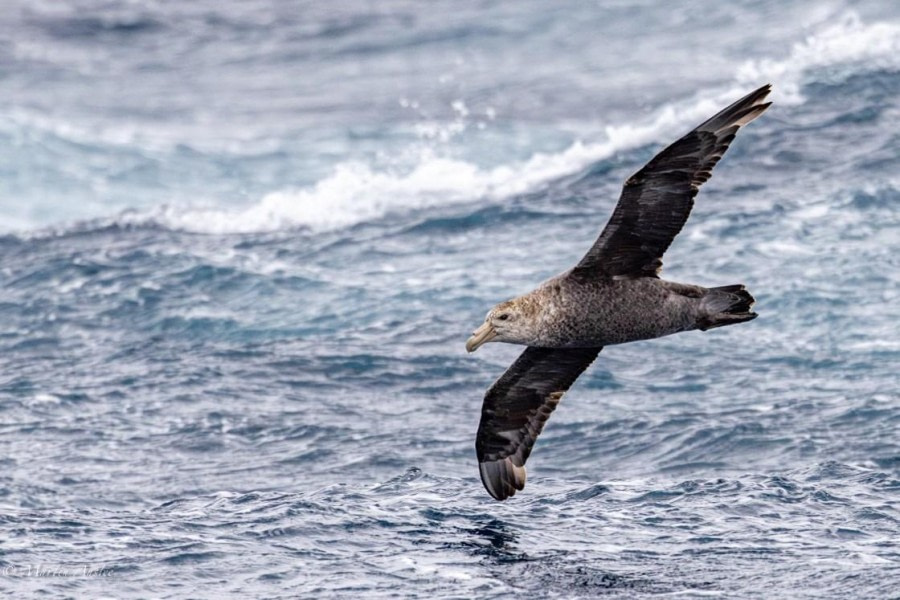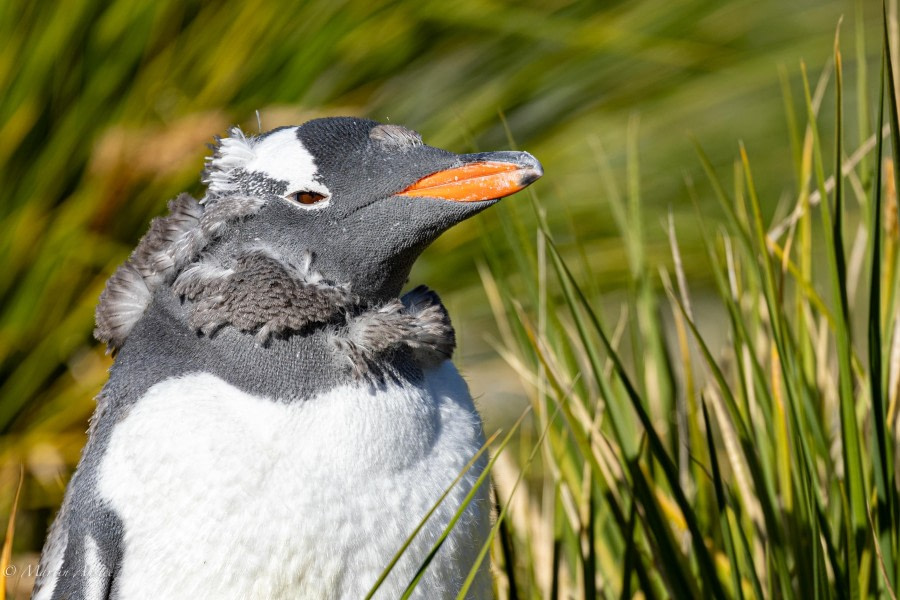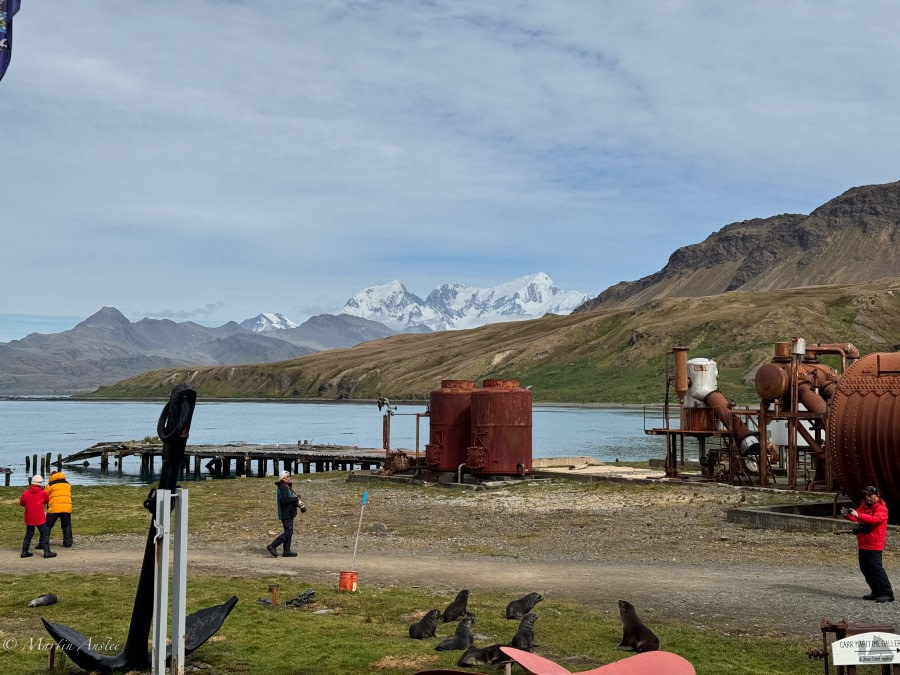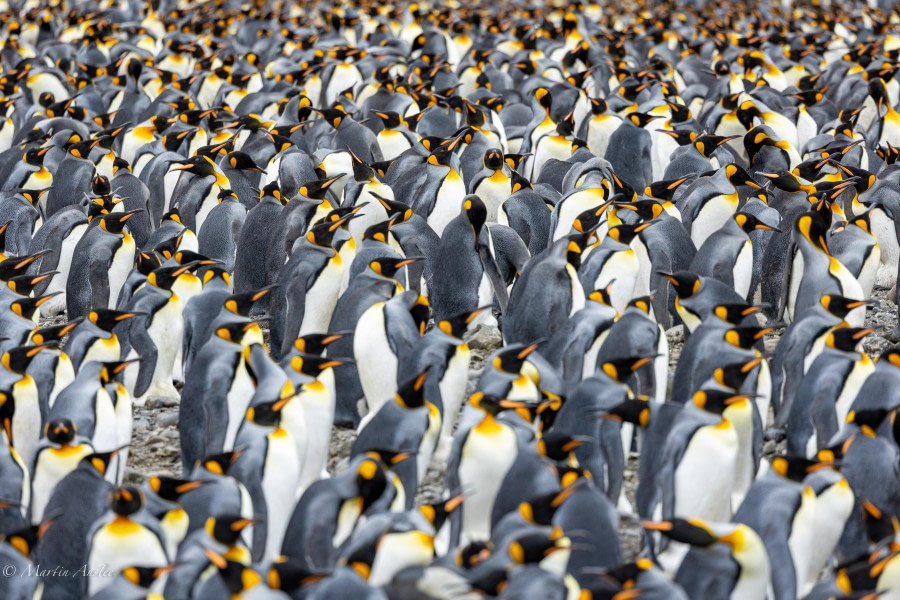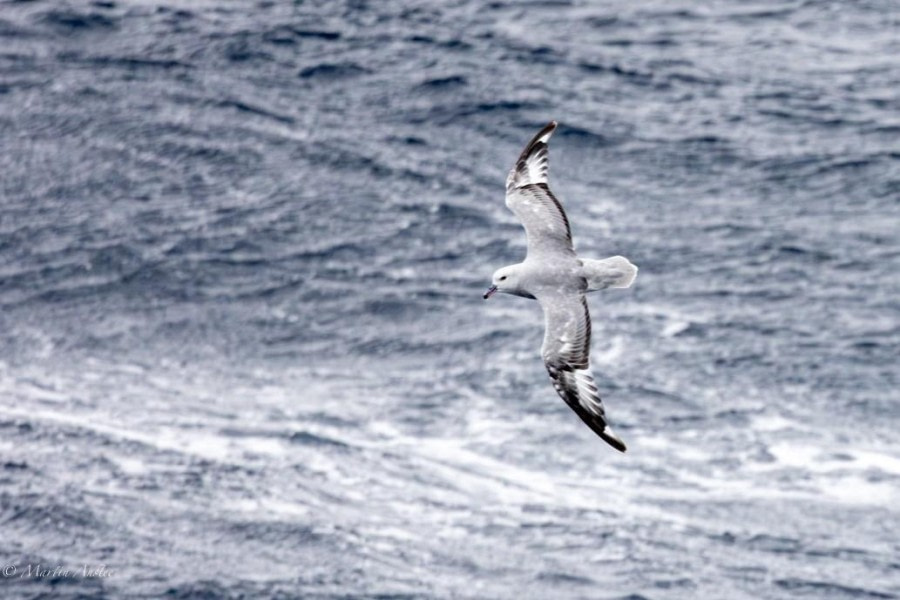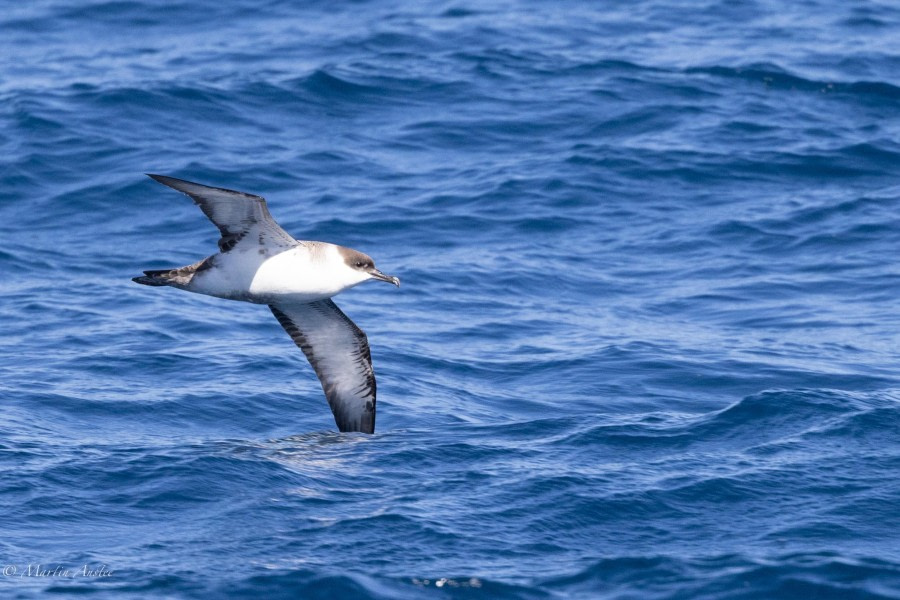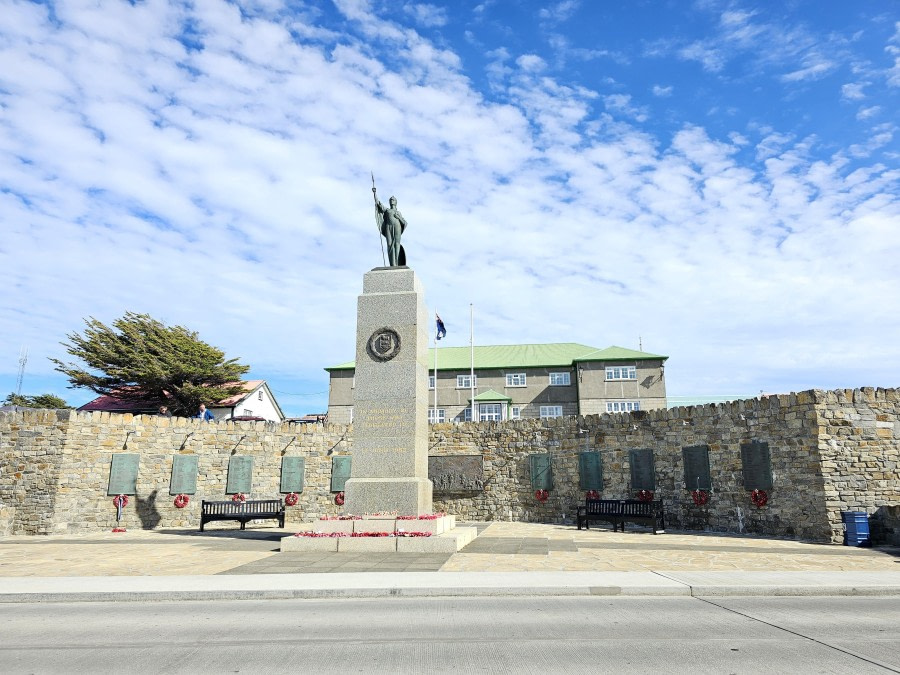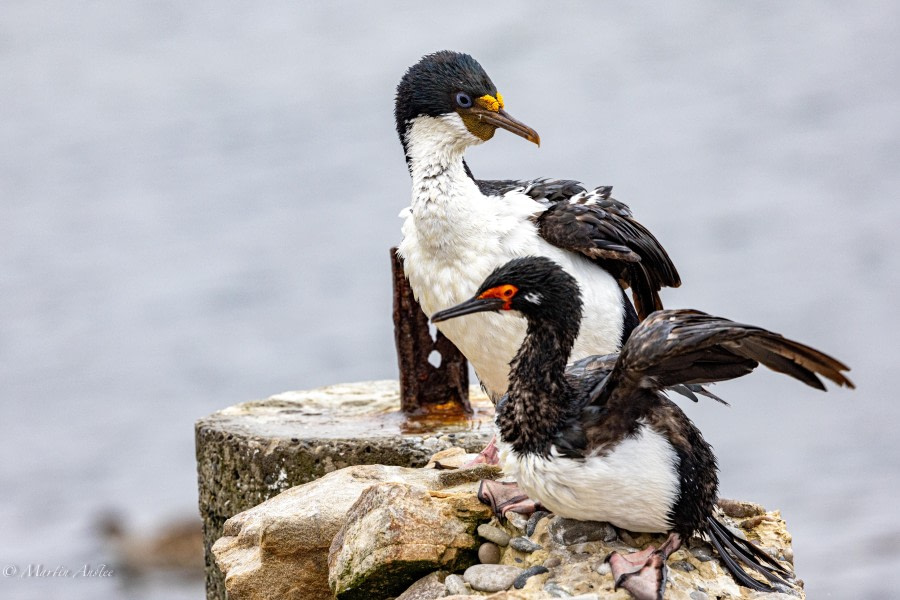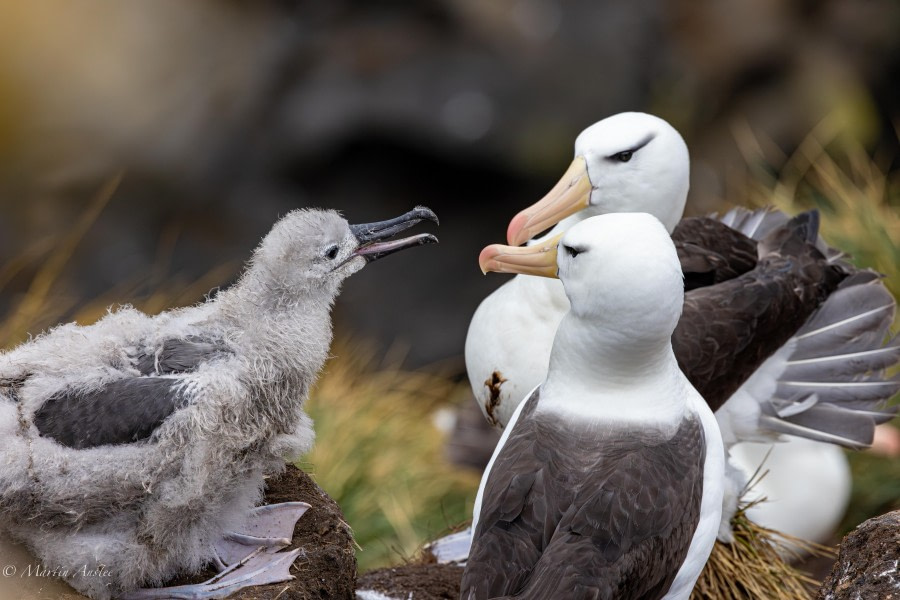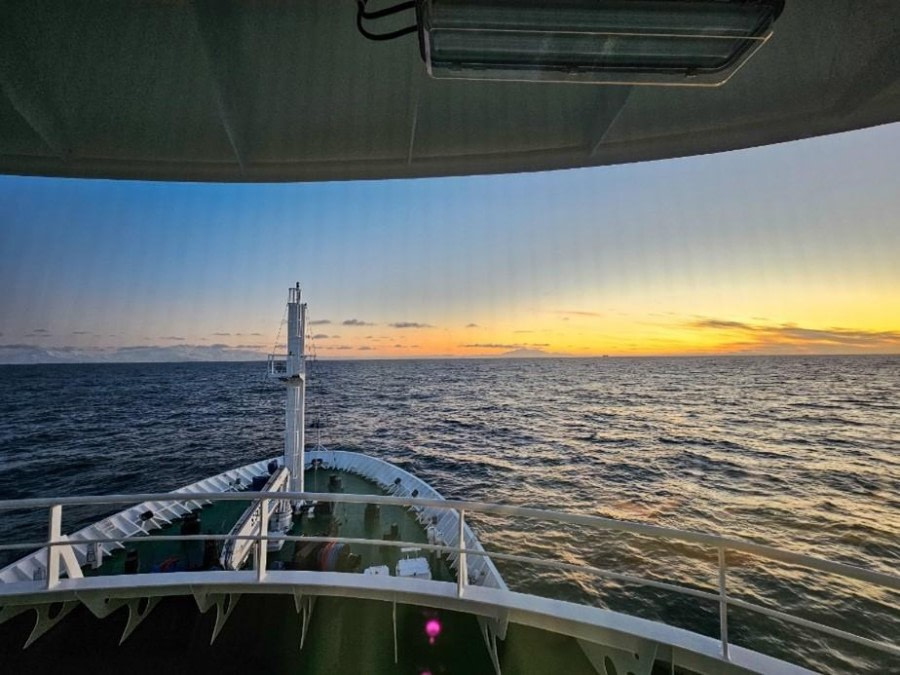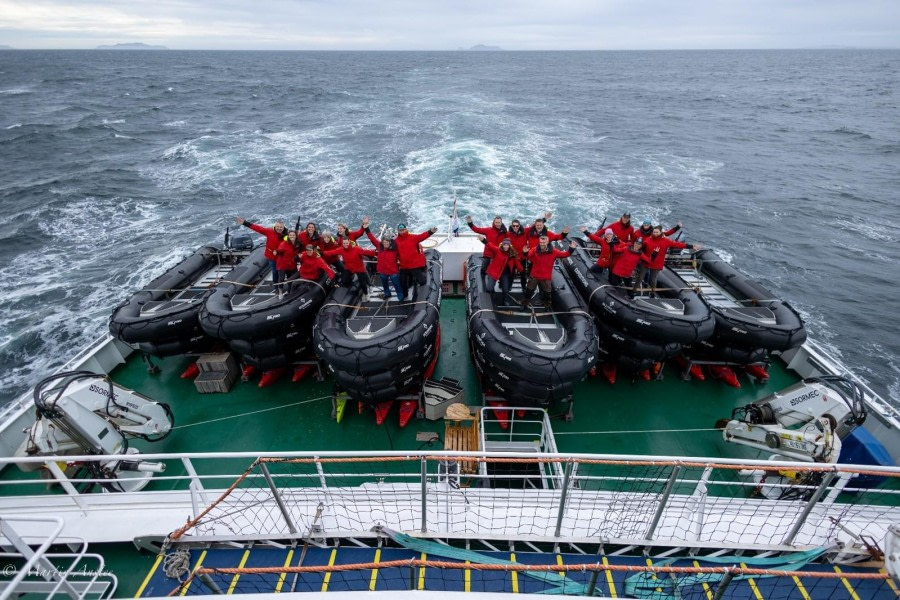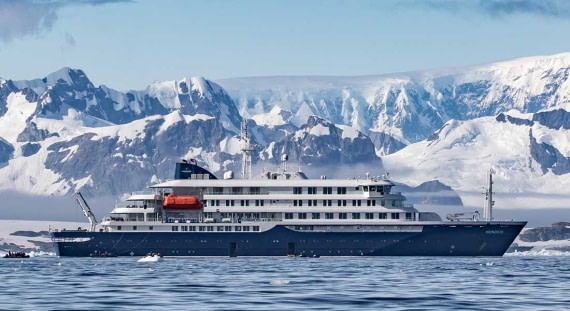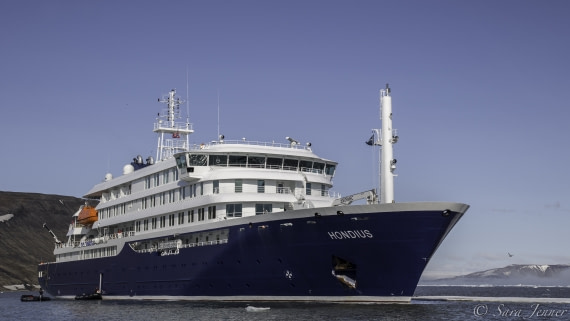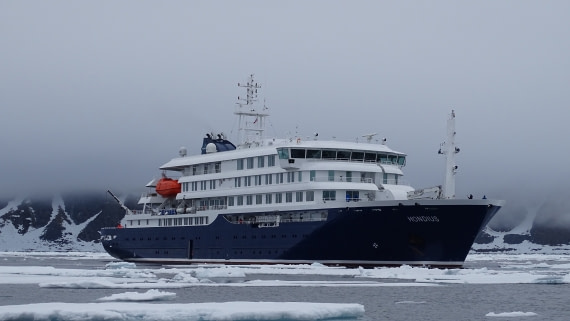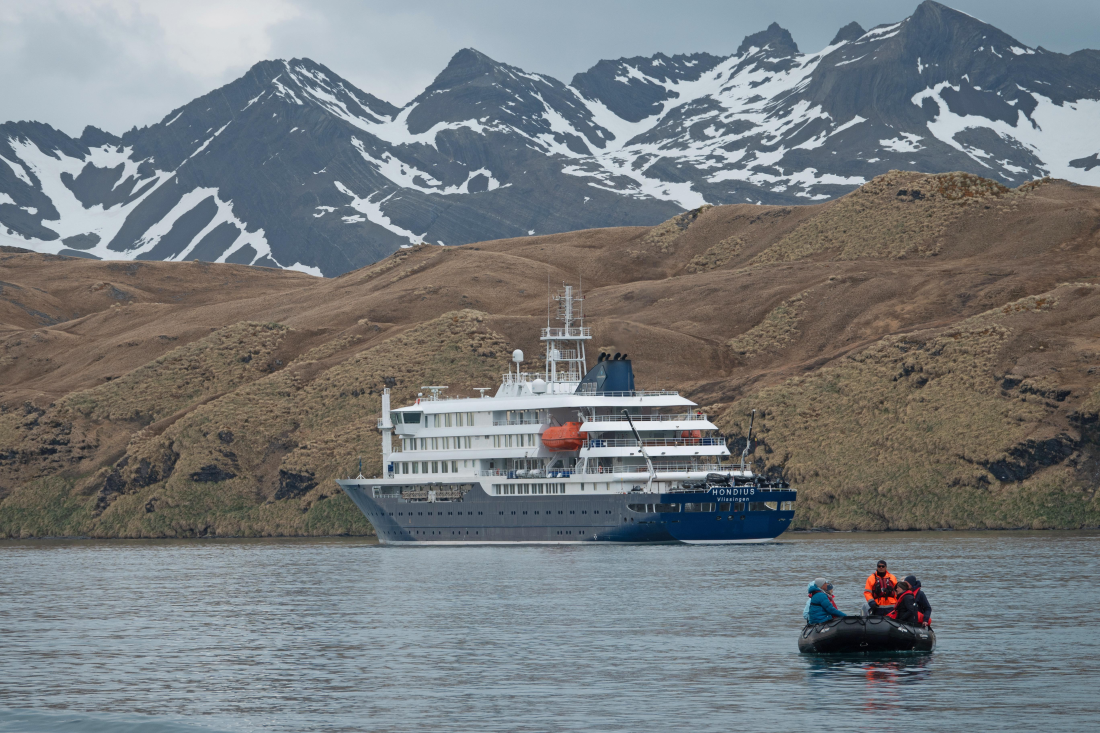| Datum: | 01.02.2024 |
| Positie: | 54° 51.8 ’S / 068° 01.9 ’W |
| Wind: | NE- 3 |
| Weer: | Partly cloudy |
| Luchttemperatuur: | +14 |
Nestled amongst towering peaks of the Martial Mountains and the windswept Beagle Channel, lays the picturesque city of Ushuaia, where we really did feel like we were at the ‘end of the world’. Located at the southernmost tip of Argentina and the capital city of the Tierra del Fuego (meaning "Land of Fire") archipelago, this port city marks the end of South America and acts as a port of call for Antarctic voyages. But this was just the start of our adventure! We would be venturing even closer to the ends of the Earth before we knew it. Travellers from far and wide gathered on the pier, eagerly awaiting embarkation on board the MV Hondius where expressions of excitement, nerves, and anticipation were upon us.
As we walked up the gangway and set foot onboard the Hondius for the first time, we were welcomed by hotel manager William who handed us our cabin cards and directed us to our rooms with the help of the warm friendly crew. Our luggage was awaiting us inside our cabins, and we began to settle into our new ‘home’.
Then followed Chief officer Matei for a mandatory safety briefing where we put on our bright orange lifejackets and gathered to our assigned muster stations followed by a safety drill where we were shown where our life rafts are kept. As we began to set sail from Ushuaia, we gathered in the Observation Lounge for a celebratory drink and canapes with Captain Artur from Russia who toasted us and his crew a safe and successful voyage. Expedition Leader then introduced himself and the Expedition Team; these would be the people who would be driving us in the zodiacs, presenting lectures, planning our landings and keeping us safe while we explore the beautiful yet isolated places on our voyage. Chris ran us through our expedition plan, and the atmosphere was buzzing with excitement. However, we were warned that the term ‘plan’ is very fluid, and that we can expect to move from ‘Plan A’ to ‘Plan D’ very quickly. After all, this was an expedition!
We then had a delicious buffet meal in the restaurant where we got to meet more of the wonderful crew who would be taking care of all our meals and beverages for the next 20 days. In the evening we spent time unpacking, resting from jetlag, and getting to know our new ship ‘family’ and of course, wildlife watching outside. Later in the evening we ventured back into the lounge where we participated in the very important IAATO (the International Association of Antarctica Tour Operators) and zodiac operations briefings, which are mandatory for our operations in the Antarctic and subantarctic regions.
The crew and staff on board have all been very welcoming, cheerful and eager to make us feel at home. We were so excited for what the next day of adventure would bring!
